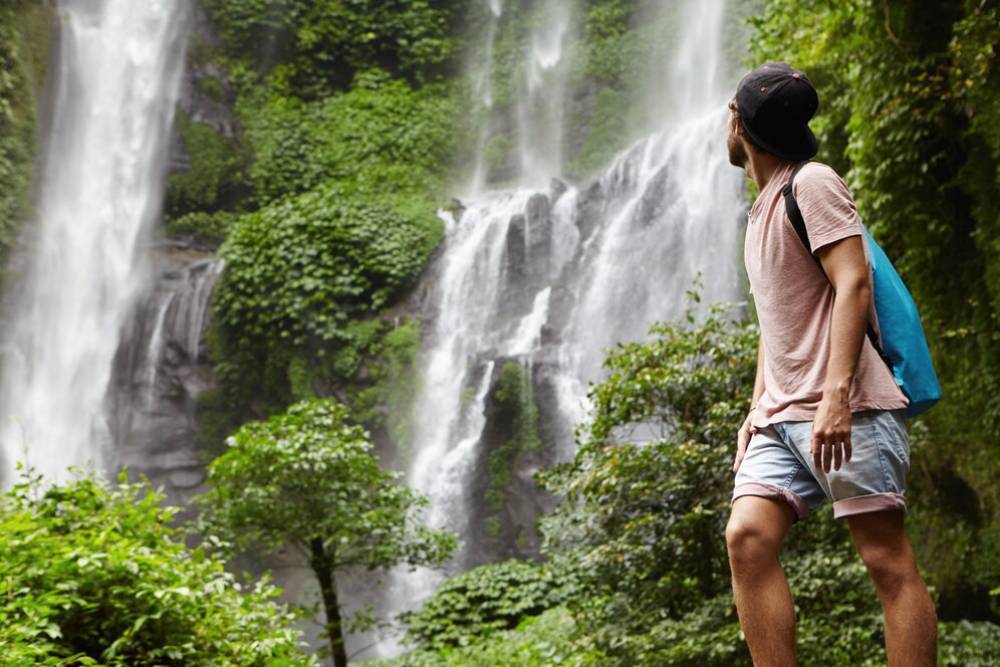
How Forest Bathing Can Transform Your Travel Experience
In our whirlwind digital age, embracing nature is essential. Enter forest bathing, or Shinrin-yoku, a Japanese gem. This mindful practice immerses you in the soothing arms of nature. It’s a delicious recipe for reducing stress and boosting well-being. Picture walking among whispering trees, where your worries fade like mist.
Adding forest bathing to your trip improves every moment, whether a quick getaway or a big adventure. Transform your getaway into a restorative journey where tranquillity and adventure coexist. So, breathe deep and let nature embrace and nurture your spirit!
Pro Tip: The true magic of forest bathing lies in silence. Avoid the urge to chat, check your phone, or rush. Instead, embrace the stillness of the forest.
Quick Guide to Forest Bathing Essentials:

- Find a tranquil forest or green space, away from crowds.
- Dress comfortably in loose clothing suitable for the weather.
- Leave distractions behind—turn off your phone to stay present.
- Engage your senses: Focus on what you see, hear, smell, touch, and even taste.
- Walk slowly and breathe deeply, allowing your body to align with nature’s pace.
Important Tip: Forest bathing isn’t about hiking or exercising—it’s about slowing down and being present. Allow yourself the time and space to unwind and experience nature’s healing power fully.
Why Forest Bathing Matters

Forest bathing is more than just a walk in the woods. It is an intentional and immersive experience designed to engage all five senses. Studies have shown that time spent in nature can:
- Lower stress levels and blood pressure
- Boost immune system function
- Improve mood and mental clarity
- Enhance creativity and focus
- Promote overall well-being
As cities grow and people rely more on screens, many travellers seek nature therapy. They want to escape daily stress and reconnect with nature, and forest bathing provides an accessible and powerful way.
Step-by-Step Guide to Forest Bathing While Traveling
Step 1: Choose the Right Destination
The first step to incorporating forest bathing into your travels is selecting a suitable location. Look for destinations rich in natural landscapes, such as:
- National parks and nature reserves
- Remote woodlands and protected forests
- Eco-retreats or wellness resorts with nature immersion experiences
- Sacred groves and ancient forests
The New Forest in the UK, the Lake District, the Scottish Highlands, and Germany’s Black Forest are great spots for forest bathing.
Step 2: Prepare for the Experience
To get the most out of your forest bathing session, prepare both mentally and physically:
- Leave behind distractions: Turn off your phone or put it on aeroplane mode.
- Dress comfortably: Wear loose clothing suitable for the weather.
- Bring minimal essentials: A water bottle, a journal, and a light snack.
- Choose a quiet time: Early morning or late afternoon offers the best experience with fewer disturbances.
Step 3: Engage All Your Senses
As you step into the forest, take a moment to pause, breathe, and observe:
- Sight: Notice the varying shades of green, the patterns of the leaves, and how light filters through the trees.
- Sound: Listen to birds chirping, the rustling leaves, and the distant water flow.
- Touch: Feel the bark of a tree, the coolness of a leaf, or the softness of moss.
- Smell: Inhale the earthy aroma of the forest, the scent of flowers, or the freshness of pine trees.
- Taste: If safe, taste the freshness of the air or any edible herbs or fruits growing naturally.
Step 4: Practice Mindful Walking and Breathing
Instead of rushing through a trail, slow down your pace and practice deep breathing. Take slow, intentional steps and focus on your surroundings. Feel the ground beneath your feet and the rhythm of your breath as you move.
- Try deep belly breathing: Inhale deeply through your nose, hold for a few seconds, and exhale slowly.
- Walk without a set goal, letting curiosity guide your movements.
Step 5: Connect with Nature on a Deeper Level
To enhance your forest bathing experience, consider:
- Sitting in stillness: Find a quiet spot to sit and simply observe.
- Journaling your thoughts: Reflect on how you feel before, during, and after your time in the forest.
- Practising gratitude: Silently express appreciation for the beauty around you.
Expert Tips for an Effective Forest Bathing Experience
- Go solo or with friends: You can forest bathe alone or with others. Just make sure everyone values the quiet and immersive nature of the experience.
- Allow time to unwind: It might take some time to fully relax, especially if you’re accustomed to a fast-paced lifestyle.
- Visit frequently: The more often you engage in forest bathing, the greater the benefits.
- Respect nature: Follow the “Leave No Trace” principles—avoid littering, stay on trails, and protect wildlife.
Common Mistakes to Avoid
- Rushing the process: Forest bathing is about slowing down, not hiking or exercising.
- Bringing technology: Checking your phone disrupts mindfulness and immersion.
- Not dressing appropriately: Uncomfortable clothing can distract from the experience.
- Talking too much: Silence enhances the benefits of nature immersion.
Advanced Insights: The Science Behind Forest Bathing
Studies reveal that forest sanctuaries work wonders for your stress levels. In contrast to bustling urban jungles, these green havens help reduce cortisol—our body’s pesky stress hormone. Not only that, but forests also gift us with phytoncides. These natural plant compounds boost our immune systems, melt away anxiety, and invite relaxation into our lives.
In a captivating study from Japan, participants immersed in forest bathing witnessed a surge in natural killer (NK) cell activity. This increase is vital for bolstering immune defences. The results show that nature therapy is not just a passing trend. It is a science-supported way to boost health.
FAQ: Your Questions Answered
Q: How long should a forest bathing session last?
A: Ideally, spend at least 1-2 hours in the forest. However, even 20-30 minutes can have positive effects.
Q: Do I need a guide for forest bathing?
A: No, but a guide can improve your experience. They lead meditative exercises and help you connect more deeply with nature.
Q: Can forest bathing be done in urban parks?
A: Yes! While dense forests offer a richer experience, any green space can provide benefits if you engage mindfully.
Q: Is forest bathing the same as hiking?
A: No. Hiking is about moving and getting to a place. On the other hand, forest bathing is about being mindful and aware of your senses.
Conclusion: Transform Your Travel Experience with Forest Bathing

Dive into the embrace of forest bathing, where travel blossoms into serenity. Here, relaxation flows like a gentle stream, and mental clarity shines like sunlight filtering through the leaves.
You unlock nature’s treasures by weaving mindful walking and sensory awareness into your adventure. Moments of stillness will transform your journey into a sanctuary of rejuvenation and restoration.
So, set aside time for a forest bathing session next time you plan a trip. Let nature guide you to inner peace, clarity, and renewal. Who knows? This simple practice may become the highlight of your travels and a lifelong habit for well-being.
Happy forest bathing!


